MQ-25A UAV can become combat
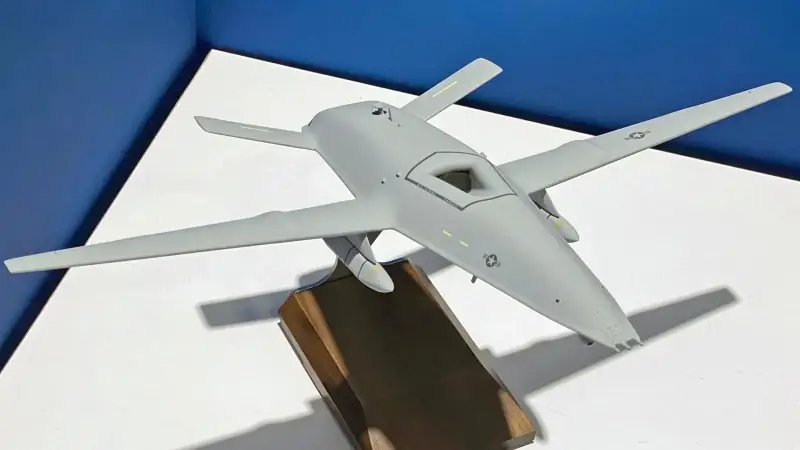
MQ-25 combat modification model with a pair of LRASM missiles
Since 2021 aviation The US Navy operates heavy unmanned aerial vehicles MQ-25 developed by Boeing. This equipment is used as aerial tankers supporting the activities of combat aircraft. At the same time, the development company reminds us of the fundamental possibility of expanding the range of tasks solved and transforming drone-tanker into a carrier of strike weapons.
Evolution of ideas
The development of the concept of a promising heavy carrier-based UAV for the US Navy began in the mid-2000s as part of the UCLASS (Unmanned Carrier-Launched Airborne Surveillance and Strike) program. The goal of the work was to create a drone capable of carrying reconnaissance equipment and weapons. In general, we were talking about a combat vehicle capable of complementing existing naval aviation fighter-bombers.
The UCLASS developers were faced with too complex tasks, which predetermined the fate of the program. It turned out to be too complicated and expensive. In addition, the participants in the work exceeded the established time frame. Because of all this, in the mid-1990s the program was suspended and then completely closed.
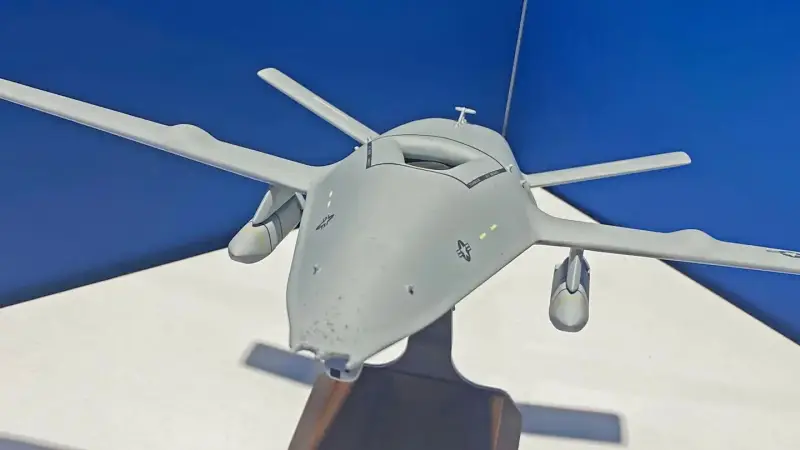
However, the developments on UCLASS were not lost. In 2016, the Pentagon launched a similar, but less complex project under the designation CBARS (Carrier-Based Aerial-Refueling System). Now contractors were required to create a drone with a tanker function, capable of transferring fuel to other aircraft. Four leading US aircraft manufacturing companies submitted applications for the CBARS competition. The development of preliminary projects for this did not take much time, because... solutions from the previous program were used.
In August 2018, Boeing was announced as the winner of the competition. It was awarded a contract worth more than $800 million to complete the development and construction of four prototype UAVs. These works were given six years. In 2020, an additional order for three drones appeared with delivery in the middle of the decade. Future aircraft received the index MQ-25A and the name Stingray (“Sea Stingray”).
First successes
In contrast to UCLASS, the CBARS program has been successful and is generally meeting its objectives. Thus, in September 2019, the first experimental MQ-25 took off for the first time. Since 2020, test flights of drones with an overhead refueling unit have been carried out. In June 2021, an experienced UAV transferred fuel to an F/A-18E/F fighter for the first time. Subsequently, similar tests were carried out with the participation of other carrier-based aircraft, including the latest F-35C aircraft.
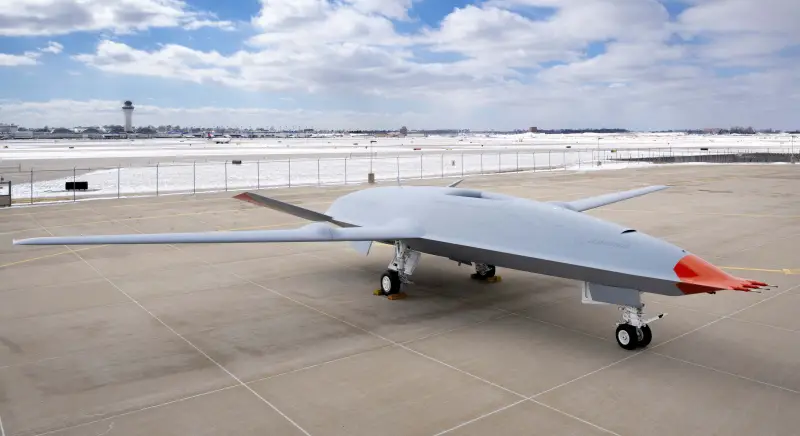
One of the experienced MQ-25
To date, the US Navy has formed the first squadron of MQ-25A UAVs. It reached initial operational readiness in the fall of 2021, and is now being used to gain experience in operating new equipment. It also planned to create two new divisions. In the medium term, the fleet wants to purchase 76 Stingrays and make them a full-fledged component of naval aviation.
Combat potential
In its current form, the Stingray UAV can only perform in-flight refueling, for which it carries the appropriate equipment. At the same time, the direct connection of the CBARS and UCLASS programs provides a fundamental opportunity to expand the range of problems to be solved. First of all, it is proposed to make the drone a strike one.
The other day, another Sea Air Space exhibition, organized by the Navy League, took place in the United States. During this event, various organizations and companies showed their latest developments, both already known samples and promising concepts. In particular, an interesting exhibit was present at the Boeing stand.
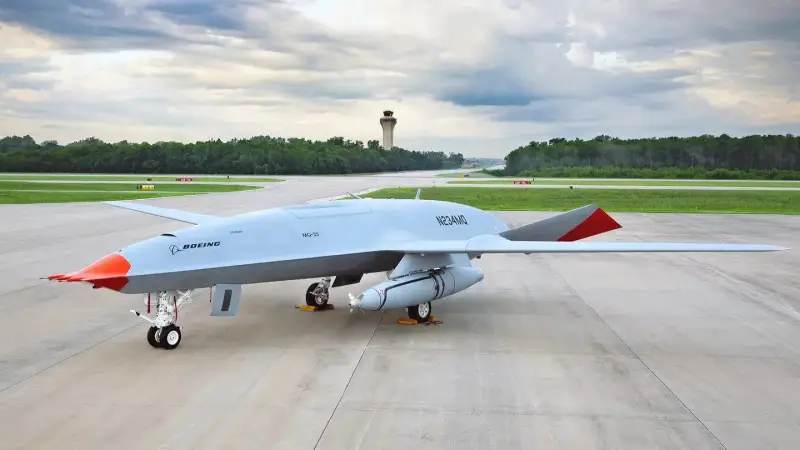
MQ-25 with ARS refueling unit
The company presented a mock-up of the MQ-25A UAV with uncharacteristic equipment. A spherical optical-electronic reconnaissance station was placed under the forward part of the fuselage. On the underwing hardpoints, instead of standard refueling units, there were two AGM-158C LRASM air-to-surface missiles.
This layout shows that Boeing is considering the possibility of further development of the existing UAV, incl. by giving it new functions. The first, predictably, is a reconnaissance-strike modification capable of carrying modern missile weapons.
Apparently, the strike version of the MQ-25A so far exists only in the form of a general concept, some developments and a mock-up for exhibitions. The further fate of this version of the UAV depends on the potential customer, the US Navy. If they decide to return to the ideas of the UCLASS program, then Boeing will be able to offer them a combat drone on a ready-made basis. The use of an existing and proven platform will significantly simplify and speed up all subsequent work.
Technical aspects
From a technical perspective, the MQ-25 Stingray is a full-size unmanned aircraft with the ability to carry a variety of payloads. It has a characteristic fuselage shape with maximum internal volume, a swept wing and a V-shaped tail. For use on aircraft carriers, the wing is foldable.
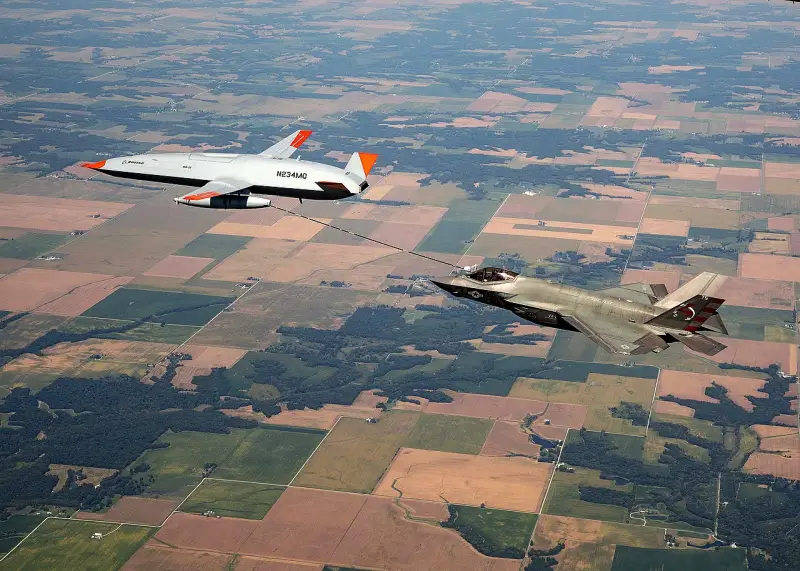
Fuel transfer to F-35 fighter
The total length of the UAV reaches 15,5 m, the wingspan is 22,9 m. The weight of the structure is not specified. At the same time, the maximum payload in the tanker configuration is reported to be 15 thousand pounds (6,8 tons). Using a Rolls-Royce AE 3007N turbojet engine, the drone reaches speeds of more than 600-620 km/h. Combat radius at full load is 500 nautical miles or 925 km.
The MQ-25 is equipped with a control system with autonomous mode and the ability to execute operator commands. The avionics of the device are built taking into account the tasks of in-flight refueling - it ensures interaction with the aircraft being refueled and the transfer of fuel to it. Other features may require software and hardware upgrades.
MQ-25A deck-based unmanned tankers are equipped with the Aerial Refueling Store refueling unit manufactured by Cobham; this device is placed on a pylon under the left wing. The torpedo-shaped body of such a product contains a drum with a hose and a cone, as well as a pump for dispensing fuel. The fuel itself is transported in the drone’s own tanks, for which a significant part of the fuselage volume is allocated.
According to recent reports, a pair of hardpoints under the wing can also be used to accommodate weapons. A mock-up from a recent exhibition shows the capability of carrying LRASM missiles. It is likely that the combat version of the MQ-25 will be able to carry other weapons if the dimensions and weight of the product correspond to the capabilities of the device.
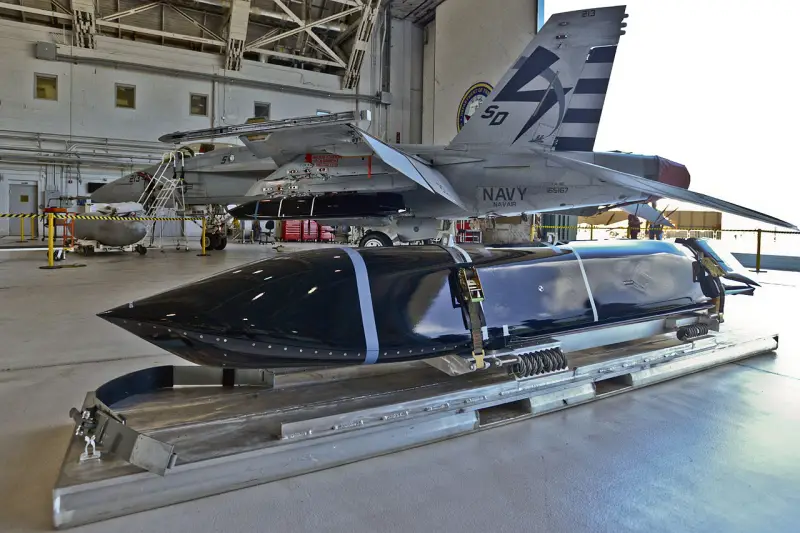
AGM-158C LRASM missile on a shipping pallet
This raises questions of a different nature. To use weapons, regardless of their class, detection and target designation means are needed. At short and medium ranges, the UAV will be able to get by with a standard EPS. Long-range weapons, in turn, will require more sophisticated means. In particular, the LRASM missile has a stated flight range of more than 900 km, and its carrier requires a certain amount of external assistance.
Perhaps the combat "Stingrays" will work in groups. In this case, some drones will take on detection and targeting tasks, while others will carry missiles. In addition, the MQ-25 will have to work with other reconnaissance assets, receiving the necessary information from them.
Directions of development
Thus, the US Navy is showing great interest in heavy UAVs and is trying to develop this area. However, despite all the efforts, so far only one large drone has reached operation, and for auxiliary purposes. It was not without difficulty that such equipment was taught to refuel, while combat missions were abandoned.
Now Boeing is proposing to return to the idea of a reconnaissance and strike UAV for carrier-based aircraft. In order to save money, she proposes to build it on the basis of an existing model and equip it with the necessary means, incl. weapons. Apparently, technical capabilities of this kind already exist, but the final decision remains with the Pentagon. He had previously expressed his views on the matter by replacing the UCLASS program with the simpler CBARS. It is unknown whether the department's views have changed over the years.
Information